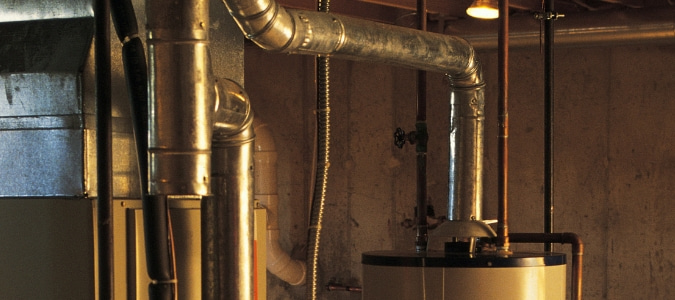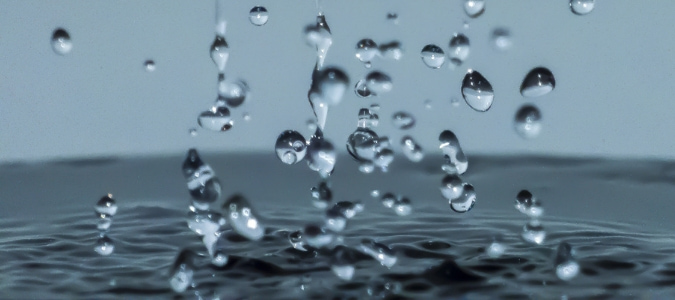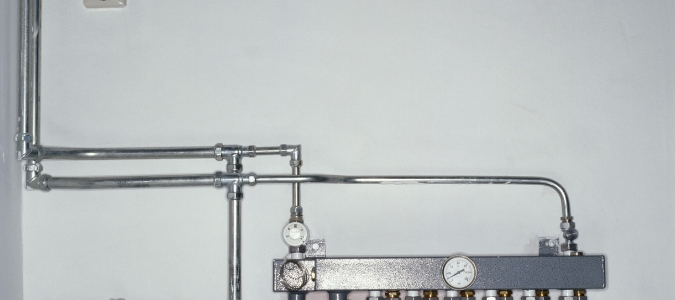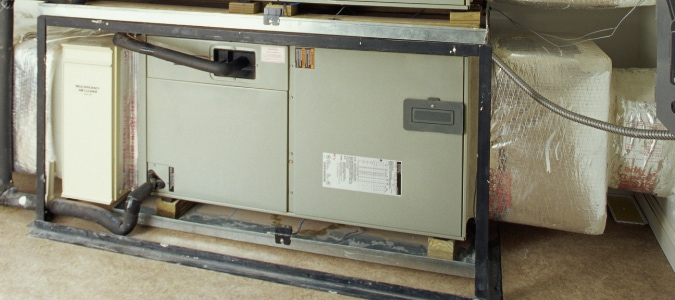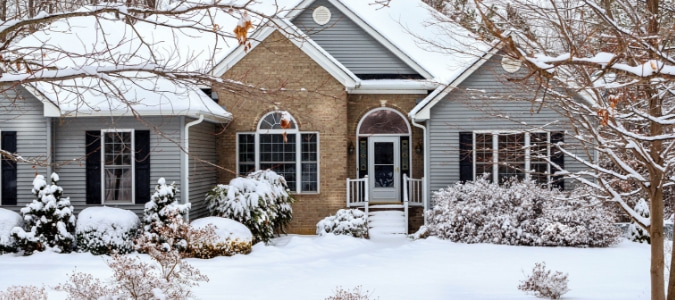
It’s winter, and that furnace you don’t think twice about for the rest of the year is finally getting some work.
Not that you typically gave your heater much thought, even during the colder months. When your house started to get chilly, you’d turn the temperature up on your thermostat to get things toasty, and that was that.
That is, not until last week. That day, you were in the attic and you saw something that gave you pause: the furnace was leaking water. Is it supposed to be doing that? Should you get it fixed?
This is an issue that heating professionals get asked all the time, and the short answer is pretty simple: no, your furnace should not leak, and yes, you absolutely need to have it repaired if you notice an accumulation of water around this appliance.
Before you start to panic, however, it’s important to understand two things:
- This is actually a pretty common problem, and
- A leaking furnace most likely doesn’t mean you need a new one.
With the proper knowledge and expertise, almost all furnace leaks can be fixed, and usually with a low-to-medium amount of cost and effort.
That doesn’t mean they’re simple or easy to deal with, though. Keep reading to learn exactly how to troubleshoot a leaking furnace and expose some of the common reasons for furnace leaks in the first place.
First, Know Your Furnace And Central Air System
You might be wondering how HVAC systems work. Before we dive in, it’s helpful to know what type of furnace and heating and cooling system (HVAC) you have. Let’s begin by reviewing some basic information about several of the most common types out there.
Common Central Heating Systems
Furnaces are typically a major part of central air systems. It’s the furnace that produces the heat that’s used to warm the living spaces in a house. Without a furnace, the entire central air heating network would fail.
So, what types of central air heating systems do furnaces support? Basically, we can place central air systems into two distinct categories: forced-air systems and natural draft systems.
Forced-Air Systems
One of the most common types of central heating is forced-air heating. This system typically consists of an air handler, a fan (also known as a blower), a heat exchanger and your controls.
Forced-air systems adjust the indoor air temperature through the following process:
- The furnace heats the heat exchanger. In most cases, the heat exchanger is a metal chamber around the furnace.
- Cold air from the house is drawn into the heat exchanger through a set of “cold-air return” ducts.
- The cold air gets warmed up as it moves through the heat exchanger.
- An air blower (basically, a fan) then forces the warm air through a series of ducts back into the house.
Natural Draft Systems
Natural draft furnaces and central air systems are mostly found in older homes. They are the oldest and simplest types of furnaces that are used for space heating.
Due to their low-efficiency ratings (below 70 percent!), these types of furnaces are rarely installed in modern homes. Nevertheless, natural draft furnaces are still quite common throughout the country, with most of them having been retrofitted with new parts to enhance their performance.
Natural draft systems exploit the natural atmospheric pressure differences between the inside and outside of the furnace to drive hot air through the home’s ventilation system. The system also relies on the principle of conventional currents, where hot air rises through the HVAC vents while cooler air from the house flows into the furnace. As the name implies, the entire process creates a “natural draft” that warms up the house.
The most distinguishing feature of a natural draft central air system is that it doesn’t use a fan or blower to move air through the central air system.
Forced Draft Systems
A forced draft system is a mid-efficiency central heating system. Essentially, it’s an improvement on the natural draft system, but not quite as good as a forced-air system. In these systems, a forced-draft fan is used to regulate and increase the efficiency of air flow within a central air system.
Other notable modified (and improved) variants of the natural draft furnace include the induced draft and the balanced draft systems.
Common Types Of Furnaces
Different technologies are used to build furnaces. Depending on the technology used, the types of furnaces can be classified as either conventional or condensing furnaces.
Conventional Furnaces
These types of furnaces are generally a much older design. The exhaust gases produced in conventional furnaces are usually expelled as soon as they are produced.
You can easily identify a conventional furnace because it has a metallic exhaust vent pipe that gets rid of exhaust gases from the furnace.
Condensing Furnaces
Most modern furnaces emulate the condensing furnace design introduced in the 1980s. Condensing furnaces are high-efficiency appliances that capture additional heat from the exhaust gases produced by the furnace. This added efficiency comes through the inclusion of both primary and secondary exchangers. As a result, condensing furnaces are much more efficient than conventional furnaces.
As the exhaust gases cool down during the primary and secondary heat extraction, water usually condenses and flows out of the furnace.
You can identify a condensing furnace by the PVC vent pipe that allows exhaust gases to exit the appliance after they have cooled down.
An experienced heating and cooling technician will tell you that there are many other ways of classifying furnaces. Having a basic understanding of the types we’ve described, however, should give you a basic sense of what you’re dealing with when a leak occurs.
Why Is My Conventional Furnace Leaking Water When The Heat Is On?
If you have a conventional furnace that leaks water, you could be experiencing one or more of the following problems:
- Defective vent pipe design
- A leaky humidifier
- Problems with your heating and cooling system
Defective Vent Pipe Design
As mentioned earlier, a conventional furnace does not extract any heat from the exhaust gases it produces. The gases are expelled as soon as they are produced. Because of this, there isn’t enough cooling time for condensation to occur in the flue pipe (also called a vent pipe) of a working conventional furnace.
Condensation will only occur if the vent is poorly designed or installed. This may happen, for instance, if the flue pipe has a slope, or is excessively long, clogged or too big. In these scenarios, the exhaust gases remain in the pipe long enough that condensation occurs and the water drips back into the furnace.
A Leaky Humidifier
Some furnaces have built-in air handlers with humidifiers. These humidifiers are designed to ensure that the air circulating back into the house from the furnace isn’t too dry. Consequently, humidifiers use water to add moisture to the air. There’s usually an elaborate mechanism that delivers water into a humidifier that’s outside of the furnace.
When a humidifier is clogged or leaky, the water in the appliance may start leaking and eventually drip back into the furnace.
AC Problems
What you might fear is a leaky furnace might not actually be a furnace problem at all. Instead, you may have an issue with your AC unit. This situation is more likely if the furnace is part of the HVAC or is directly or indirectly connected to an indoor AC unit.
One of the main purposes of an air conditioner is to dehumidify the ambient air in your home. Dehumidification involves absorbing moisture (water) from the air. Once it’s absorbed, the moisture drains out of your unit via a condensate drain line.
A clogged or leaky condensate drain line can cause water to leak into the surrounding structures, including the furnace.
Troubleshooting Conventional Furnace Problems That Cause Water Leakage
Want to try a DIY approach before calling in a professional? Follow our tips below.
Begin by inspecting the vent pipe. You’ll do this by assessing its shape, structure and integrity. If something about the pipe itself seems wrong, consult a professional for further advice about the necessary changes to the design and installation of the vent pipe, as the scope of this project is beyond what most typical homeowners have the tool and expertise to carry out.
If it’s not the vent pipe that’s the issue, next you’ll want to check the furnace’s built-in humidifier. This part is usually visible on the exterior to the furnace. Examine the humidifier for any leaks and blockages along the humidifier water feed tube, the water drain line and the external casing. If you notice something that’s out of place, you should call in a professional to assess the humidifier and give further recommendations.
One more thing you can do is to check to see if the air conditioner itself could be the source of the leak. If so, your best course of action is to contact an HVAC professional to come fix the leak.
Water Dripping From Furnace Vent Pipe: What’s Wrong?
As we explained earlier, condensation is a normal process within a condensing furnace (that’s why it’s called a “condensing furnace”, after all). The end result of this condensation is water, so if you see water around a condensing furnace, you shouldn’t be particularly alarmed. Usually, this issue only requires minor repairs to make the water disappear.
That being said, your condensing furnace still shouldn’t leak. If you do notice water accumulating around your furnace, you likely have one of the following problems:
- Heat exchanger problems
- Blocked condensation drain
- Problems within the condensation pump
- Condensation line anomalies
High-efficiency condensing furnaces have two heat exchangers. These exchangers extract extra heat from the exhaust fumes the furnace produces. During this extraction, the vapors within these exhaust fumes are condensed into water. The resulting water is then channeled out via a tube into a condensation drain and out of the furnace.
However, if there are problems along the drainage components—including with the drain pumps, the drain tube and the drain line—water can leak. Often, issues involving these components are the result of clogs or breakages.
Another frequent cause of water leakage in a condensing furnace is the presence of cracks within the heat exchangers, especially the second heat exchanger. These cracks allow water to drip back into the furnace.
Finally, just like in conventional furnaces, water leakage in a condensing furnace may be attributed to a faulty AC unit.
Troubleshooting Common Furnace Problems That Cause Water to Leak In A Condensing Furnace
Have a condensing furnace and want to try to diagnose and repair the problem?
You’ll want to begin by inspecting the drain trap of the furnace. If it’s clogged by dirt, clean out the drain trap. You can use a shop vac for this task.
Next, examine the condensation pump, humidifier and drain lines. If you see signs of malfunction, breakage or clogging in any of these parts, you should schedule a furnace repair with a reputable HVAC company.
Likewise, if you suspect that the heat exchangers might be the culprit for your leaking furnace, contacting a qualified technician is your best next move.
Finally, check the air conditioner and see whether the drainage from its humidifier is the cause of the water leakage.
ABC Can Repair And Maintain Your Furnace
A furnace leaking water in winter should never be ignored. While you most likely have a relatively minor issue, a leaky furnace could be the sign of a larger underlying problem. Putting off a service could cause significant damage to your entire system, leading to costly repairs, something any homeowner would like to avoid. ABC Home & Commercial Services has been helping homeowners with heating and cooling issues for decades. By performing regular maintenance, our experienced technicians can help resolve any minor problems before they become a big headache. With ABC’s help, you’ll rest easy knowing your home will stay comfortable, year round, without your having to lift a finger.
